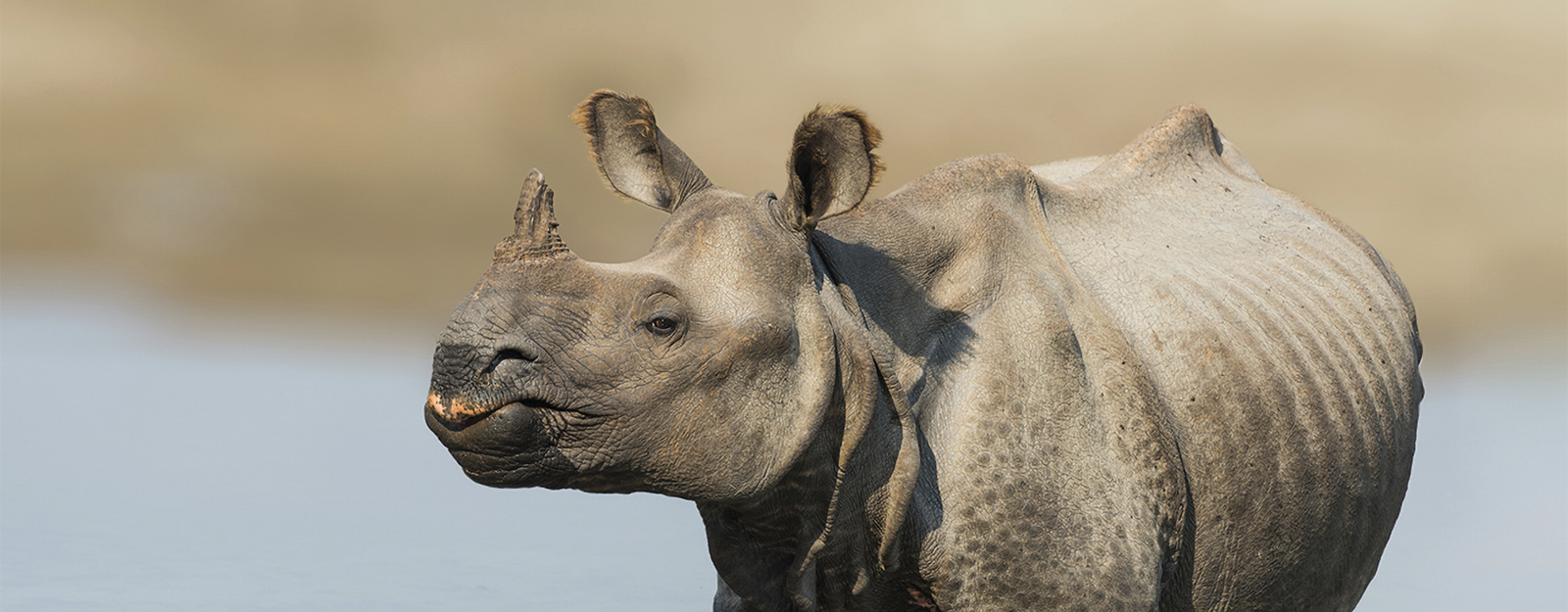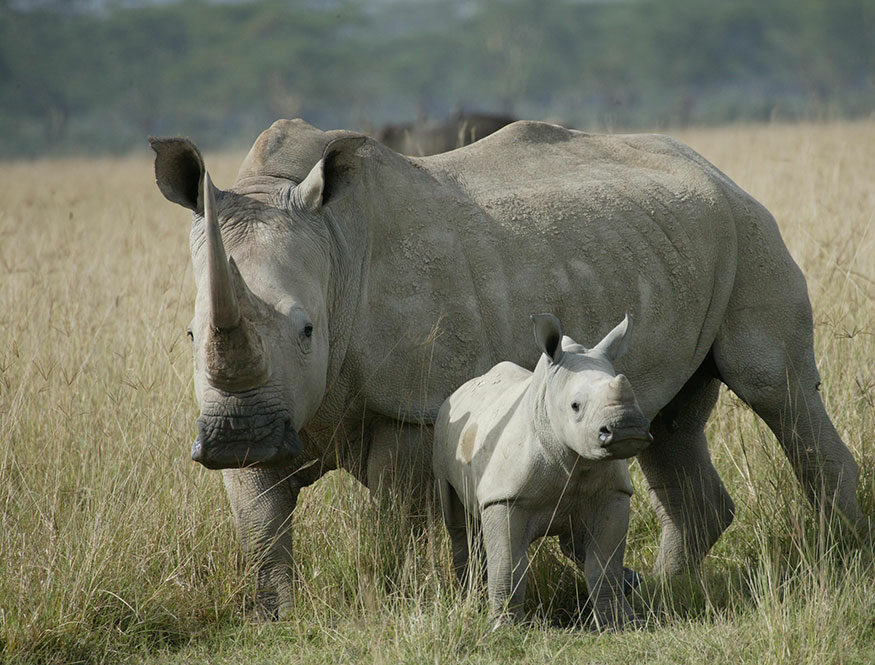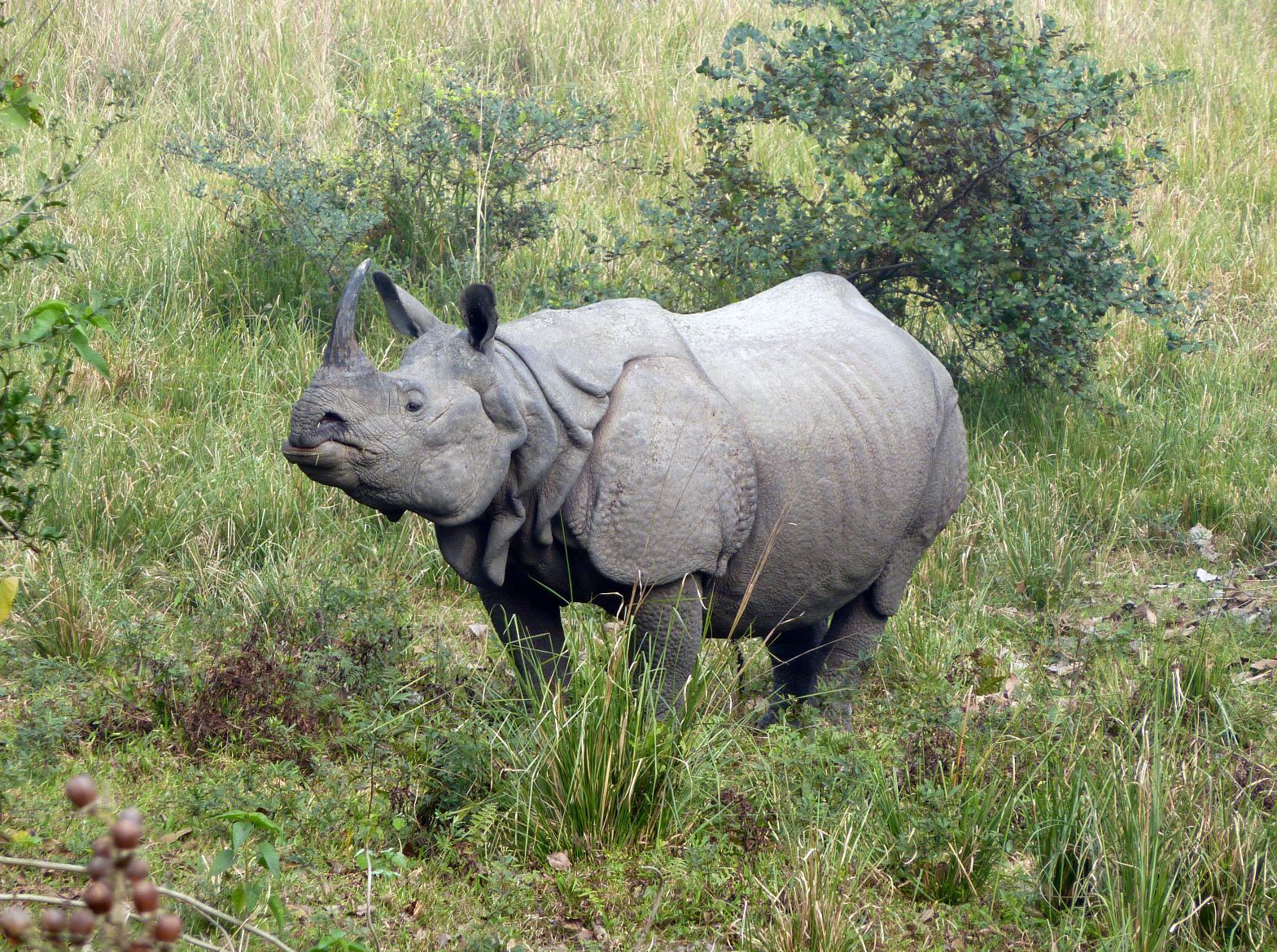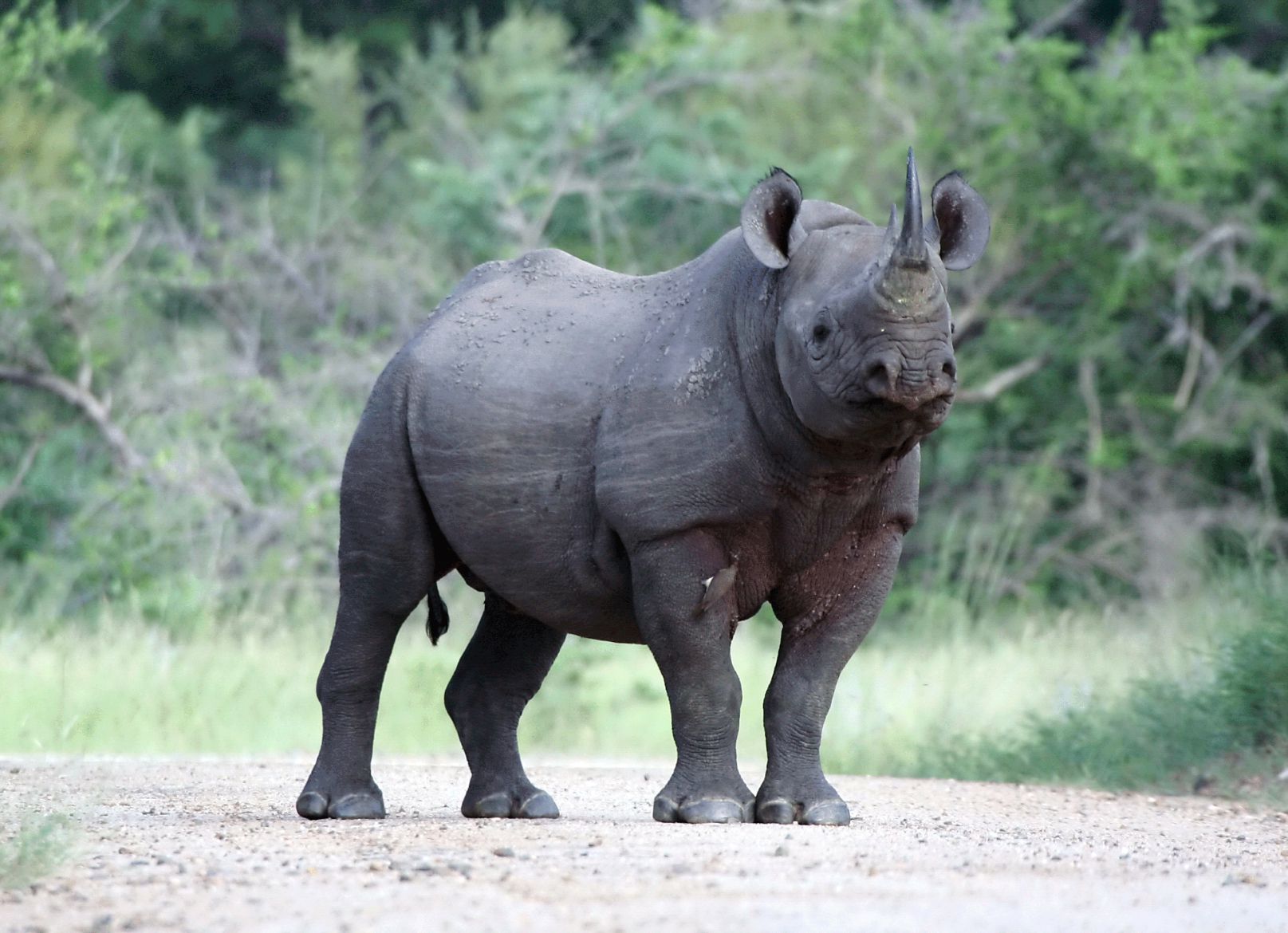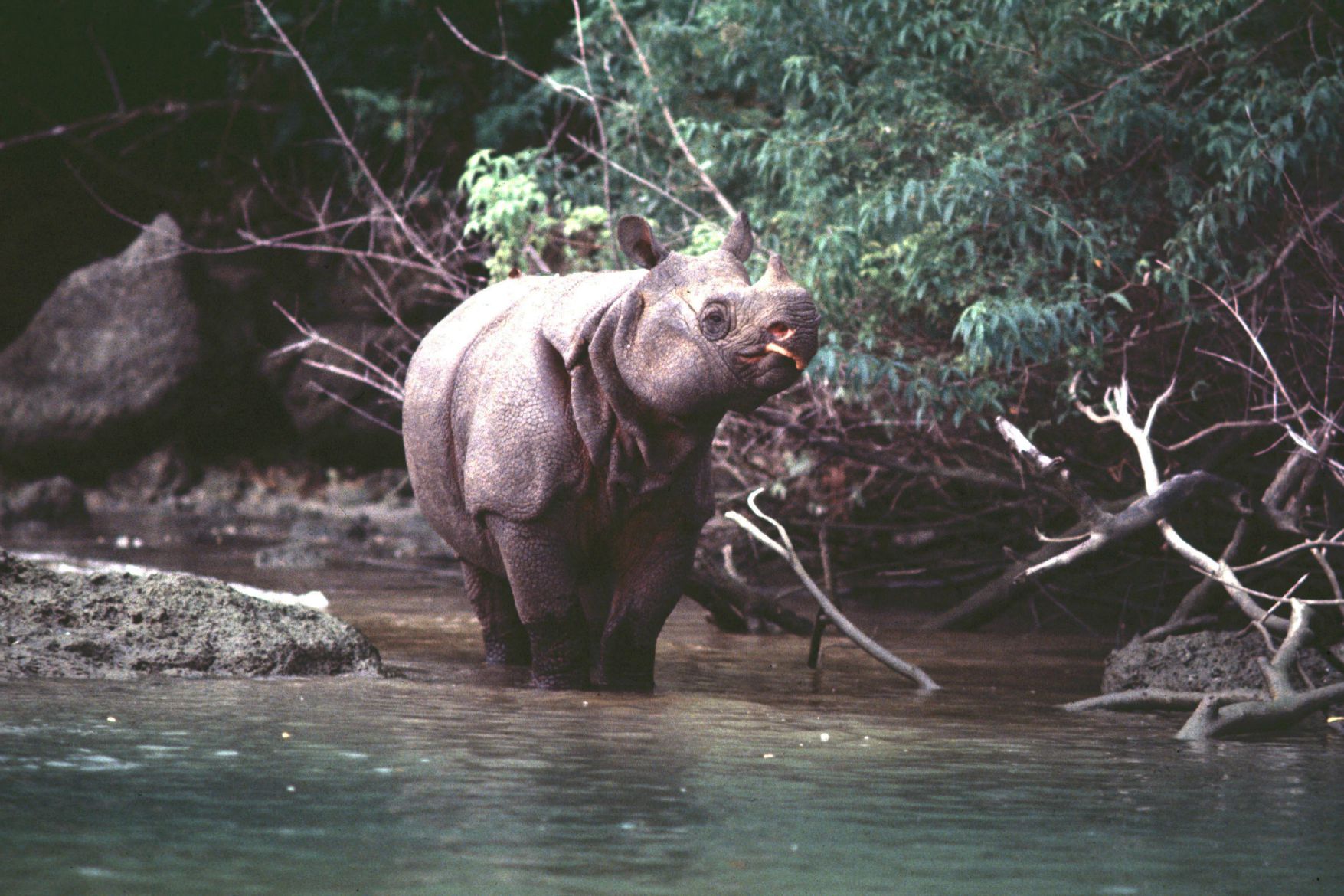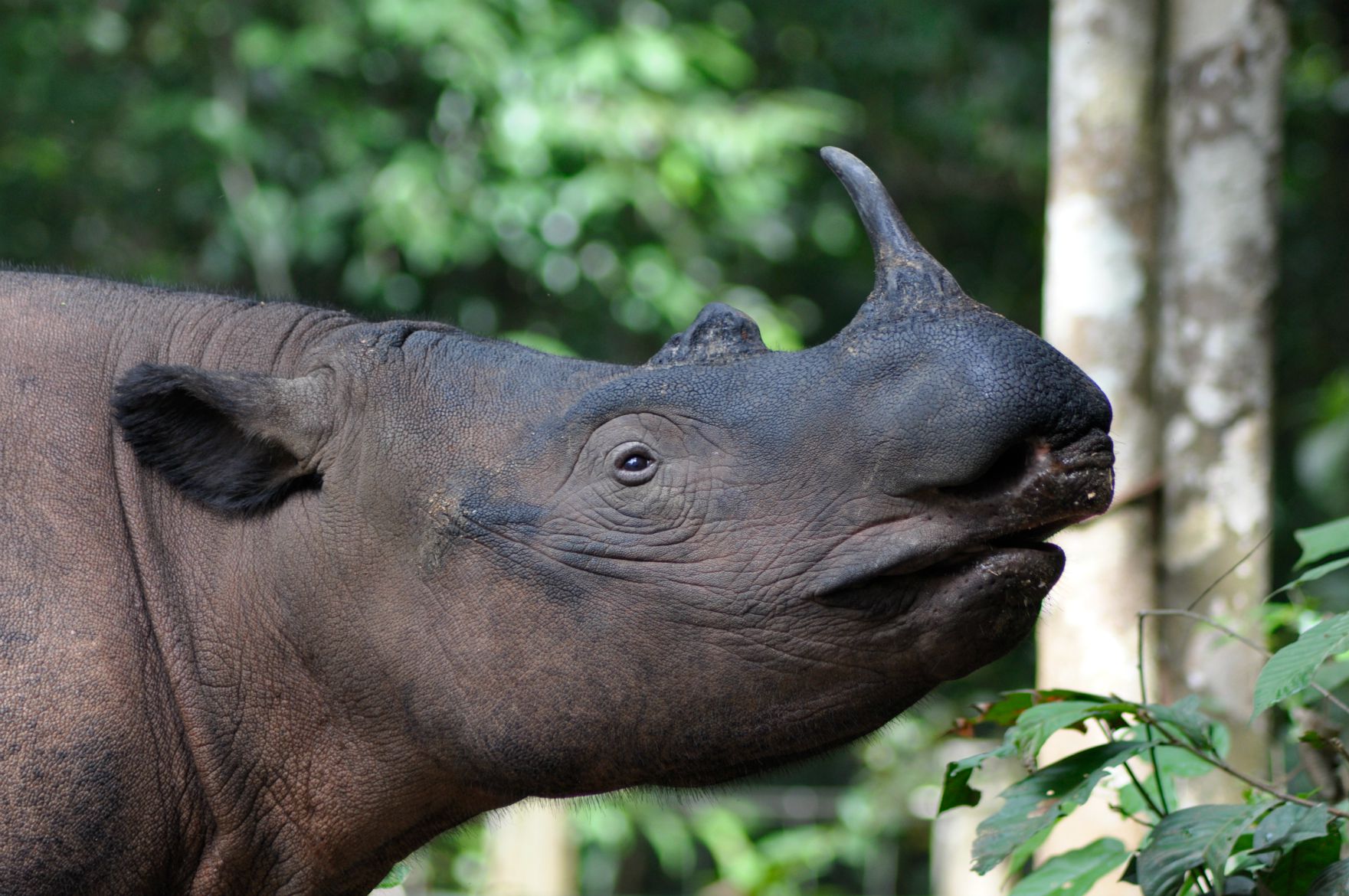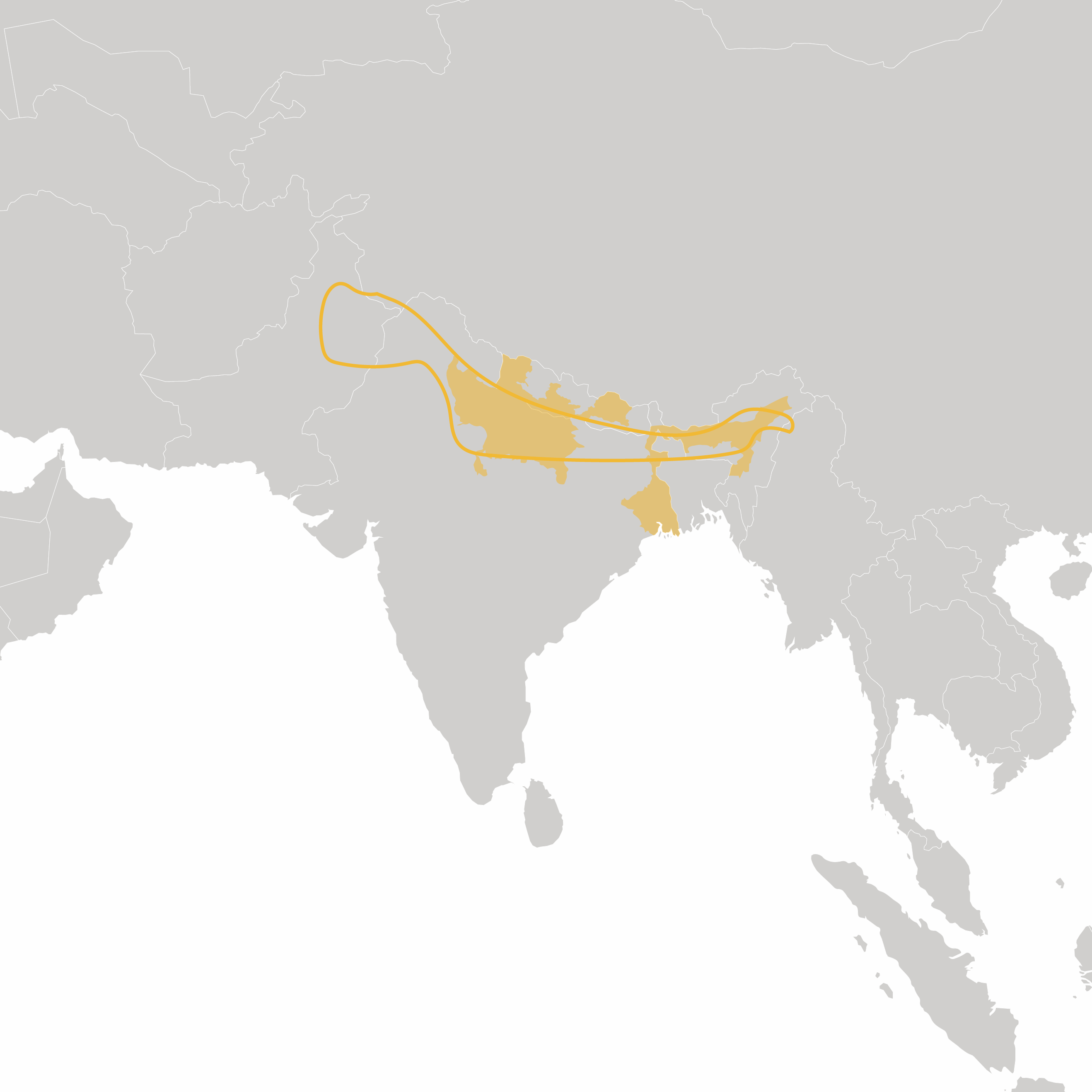The Rhino Family
Greater one-horned rhino
(Rhinoceros unicornis)
The recovery of the greater one-horned rhino is a conservation success story. Thanks to strict protection by government authorities in India and Nepal, rhino populations have rebounded from fewer than 100 individuals to more than 4,000 today.
The species derives its name from its single large horn. The “tank-like” appearance of the skin resembles grey plates of armor with rivets.
IUCN Red List Status: Vulnerable
Facts
Biology
- The greater one-horned rhino lives in northern India and southern Nepal, in riverine (floodplain) grasslands and adjacent woodland.
- Greater one-horned rhinos are grazers. When not grazing on land, animals like to immerse themselves in water, where they also graze on aquatic plants.
- Gestation lasts approximately 15 – 16 months, and mothers give birth to one calf every 2 – 3 years.
- Greater one-horned rhinos are usually solitary except for females with young. Males maintain loosely-defended territories.
Common Names
Greater one-horned rhinoceros: referring to the single large horn
Indian and/or Nepalese rhinoceros: referring to the species’ range
Scientific Name and Origin
Rhinoceros unicornis from the Greek “rhino”, meaning “nose” and “ceros”, meaning “horn” and “unicornis” from the Latin “uni”, meaning “one” and “cornis”, meaning “horn”
Current Greater One-Horned Rhino Numbers and Distribution
More than 4,000 in the wild.
Physical Characteristics
SIZE
Weight: 4,000-6,000 lbs (1,800 – 2,700 kg)
Height: 5.75 – 6.5 feet (1.75 – 2.0 m) tall at shoulder
Length: 10- 12.5 feet (3.0 – 3.8 m) length of head and body
HORN
Greater one-horned rhinos have a single horn 8 to 24 inches (20 to 61 cm) long.
Photo Gallery
The Greater One-Horned Rhino Needs Your Help
Protect greater one-horned rhinos
Support our work in wildlife crime intelligence and protection.

